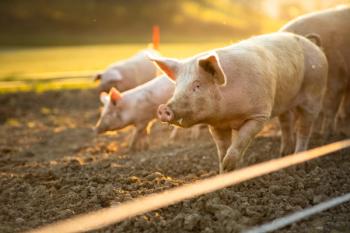
LIBS Proves its Versatility for Moon Missions in New Study
Scientists from the University of Tokyo explored the utility of laser-induced breakdown spectroscopy (LIBS) in lunar missions.
The National Aeronautics and Space Administration (NASA) last landed astronauts on the moon back in the 1960s and 1970s with the Apollo program (1). This program was fueled by scientific innovation, a desire to be bold, a thirst for knowledge, and to be victorious in the Space Race during a time of tensions between competing nations (1). Since then, NASA has made it a goal, through its Artemis program, to go back to the moon (2).
To further advance this goal, lunar exploration studies have been ongoing. A recent study shows how spectroscopic techniques can be useful to furthering our space exploration. This study, published in Spectrochimica Acta Part B: Atomic Spectroscopy by researchers at The University of Tokyo and led by K. Yumoto, described how laser-induced breakdown spectroscopy (LIBS) can be utilized for future lunar exploration (3). By addressing challenges posed by the Moon’s unique environment—such as the lack of atmosphere and diverse surface materials—the team developed a robust multivariate calibration model that enhances the accuracy of in-situ geochemical analysis (3).
The Moon’s gravity is different than that of Earth’s and so is its surface. As a result, conducting analysis on the Moon requires tools that can adapt to these different conditions. Lunar surface materials vary from fine regolith to solid boulders, encompassing a compositional spectrum that includes anorthosites and basalts (3). The study applied LIBS on 169 geologic powder samples representative of the full range of lunar meteorite compositions (3). These experiments were conducted under vacuum conditions, simulating the Moon’s environment.
To validate the model, Yumoto and colleagues expanded their testing to include lunar meteorites, terrestrial anorthites, and lunar simulants. These were analyzed in various forms, such as rock chips and soils with differing grain sizes and densities, reflecting the heterogeneity of lunar materials (3).
Root mean squared error (RMSE) was used to evaluate the accuracy of LIBS quantification. For powdered samples, the RMSE values for major oxides such as SiO₂, TiO₂, Al₂O₃, MgO, and CaO were within 1.5 wt% to 2.5 wt% (3). Even when applied to rock chip samples, the accuracy remained consistent within a factor of two (3). These findings are significant, given the considerable physical differences between powders and solid rocks.
One of the notable observations is that the soil samples with varying grain sizes and bulk densities showed only minor impacts on LIBS performance (3). This robustness suggests that LIBS can reliably analyze lunar soils regardless of their physical properties, a critical capability for future missions.
The study highlighted LIBS’ potential for distinguishing key lunar material groups, such as anorthosites, norites, and basalts. For example, the model could effectively differentiate between high-Ti and low-Ti basalts, as well as “purest” anorthosites (98% plagioclase) and “pure” anorthosites (95% plagioclase) (3). These distinctions are vital for understanding the Moon’s geological history, including the evolution of its magma ocean and the chronology of major impact events (3).
LIBS was also useful is locating ilmenite-rich soils. These soils are important for potential in-situ resource utilization, such as oxygen and titanium extraction (3). By identifying these deposits, future missions can support both scientific goals and the development of sustainable lunar operations (3).
LIBS has proven itself as a versatile and reliable tool for rapid geochemical characterization of the Moon’s surface. This study shows that its ability to function under vacuum conditions, adapt to a wide range of sample types, and provide accurate compositional data aligns with the objectives of upcoming lunar exploration initiatives and makes LIBS a good technique to use to learn more about the Moon’s secrets and supporting the next wave of exploration (3).
References
- NASA, The Apollo Program. NASA.gov. Available at:
https://www.nasa.gov/the-apollo-program/ (accessed 2024-11-13). - NASA, Artemis. NASA.gov. Available at:
https://www.nasa.gov/humans-in-space/artemis/ (accessed 2024-11-13). - Yumoto, K.; Cho, Y.; Ogura, J. A.; et al. Elemental Analyses of Feldspathic to Basaltic Soils and Rocks on the Moon Using Laser-induced Breakdown Spectroscopy. Spectrochimica Acta Part B: At. Spectrosc. 2024, 221, 107049. DOI:
10.1016/j.sab.2024.107049
Newsletter
Get essential updates on the latest spectroscopy technologies, regulatory standards, and best practices—subscribe today to Spectroscopy.




